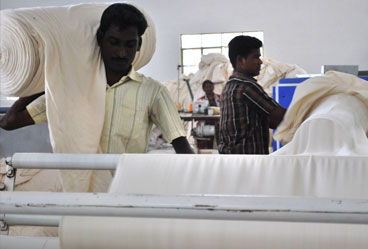One of most asked question by designers is: What is the cost of sampling designs overseas? It is a huge misconception that it is cheaper for a factory to produce one sample of each design at the fraction of the cost you pay locally.
Majority of apparel factories charge three times the cost of a garment in bulk production. For example if you order 1000 t-shirts and your cost is $5.00, they will charge you $15 for the sample. These sampling charges are actually a formality. Due to heavy competition and fear of losing you as a potential client- they feel pressured to absorb the cost in hopes of getting an order. People are not paid for their time. Once an order is placed the costs are added back into the garment bulk pricing.
Costs are typically higher and should be based on the total number of samples and who is involved in the process.
What is the true cost of making garment samples & prototypes?
The prototype is a BLUEPRINT for bulk production.
Lets go through the details together and I’ll explain the costs involved in sampling your designs. Who is involved?
1. The apparel production manager- The person who orchestrates the whole thing and communicates with the product development manager. Garment sampling & sourcing requires accurate communication of standards and specifications.
2. Fabric Weaver- May be involved in the purchasing and sourcing yarn. Produces a small batch of fabric based on your requirements. They are extremely busy and this takes time.
3. Fabric Dyer- Produces lab dips for color approvals (which may be up to a few times to get it right), than uses the smallest (most heavily used) dying vessel to dye a small yardage. If you need more than one color fabric dyed, this increases the cost.
4.Garment Washer-In most case this is a separate unit from dyer that takes the griege fabric and washes the garment to control shrinkage. Mostly- washes for hand-feel are added at this stage (Eg. fabric softener, enzyme wash or bio wash).
5. Hang Tag Maker- The hang tag screen-for paper tags must be set up & approvals must be sent. Paper samples must be sourced and sent as well.
6. Care Label Maker- Screen must be set up. Material for labels must be purchased.
7. Screen Printer- If a screen print is required- inks/color/quality must be sourced and screen set up.
8. Patten Maker- If this is not made locally a pattern maker follows sample and specs to create samples, that my go thru many back and forth changes before it is approved. (Once the pattern is approved each size is graded for pre production.)
9. Sample Sewer-Stitches garments. After fit comments-the proto types may be sewn several times, unit a final one is achieved.
10. Trims/thread coordinator – Trims may need to be customized. Eg.-zippers can be somewhat customized, which need to be made according to color, length and weight.
As you can see there are many people involved. And without even going into much detail- it takes everyone a lot of time and resources.
Source My Garment Consulting believes in the people that make our garments. The word “factory” gives the impression that clothing is made by machines, when in fact, they are made by people. Our belief in fair trade values means we are working towards building partnerships so we can all grow together. We are committed to ethics and ensuring garment workers are paid fairly.



